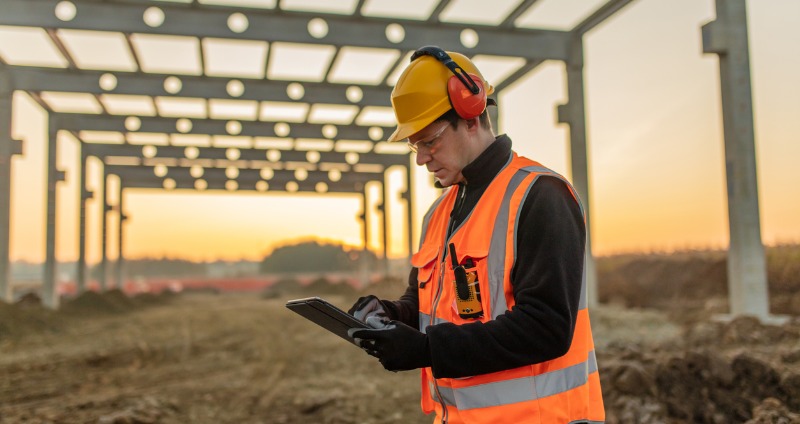
There’s more choice than ever when it comes to devices for hazardous areas. You can use a dedicated intrinsically safe device or choose a consumer device that’s enclosed in an XCIEL case. It all depends on what you need the device for, which makes the operating system an important consideration.
If the majority of employees within a given organisation use an Android or Windows operating system, it makes sense to choose an intrinsically safe device as there are many options that use these as a default. However, for organisations that use the iOS operating system, it makes sense for field workers to use Apple products placed in an XCIEL case, which converts consumer devices into rugged intrinsically safe devices.
An operating system connects all parts of a business and allows all employees to work together seamlessly. If head office staff are using one operating system and field workers are using another, it makes data sharing more difficult and time consuming than it needs to be.
So, if your organisation has a preference between iOS, Android or Windows, it makes sense to base your rugged device decision on the same system. Whether that’s a dedicated intrinsically safe device or a consumer device enclosed in a XCIEL case, you will have a hard-working, tough-as-nails device that will see field workers through every shift.
Intrinsically Safe Devices
Intrinsically safe phones and tablets are ultra rugged, so they not only meet the demands of a harsh environment but may also meet the requirements of a hazardous atmosphere. Once you know the site’s hazardous zoning, you can select a device to match.
Consumer Devices with Intrinsically Safe Cases
Workers wanting to use a consumer device on site, such as an iPhone or iPad, now have the option of enclosing it in an intrinsically safe XCIEL case, so that it’s safe for use in hazardous atmospheres. The range of patented cases fit off-the shelf devices from Apple to allow field workers to work safely in Zone 1 and Zone 2 hazardous areas.
FAQs
How do I know if I need an XCIEL case?
That depends on the device and the site’s zoning. If it’s a rugged device, it’s safe to use without a case in an outdoor, non-incendive environment. If the environment is zoned as explosive, the rugged device needs to be an intrinsically safe device that matches for the site’s zoning (Zone 2, Zone 1 or Zone 0). If you own or are looking to purchase a regular Apple device that you intend to use in harsh weather conditions, an XCIEL case will protect it from the elements. If the site is zoned incendive, you will need a XCIEL case with a zoning that matches the site.
How do I know which case I need?
You will need to contact a hazardous expert on site to find out the risk profile of the site. If you move between sites, you may need to consider getting a case that’s certified for Zone 0 or Zone 1 so your device can go everywhere you need. There’s also the chance that a Zone 2 area could become a Zone 1 if flammable gas or dust is detected, or in times of an emergency.
Can I use a flameproof case to convert a consumer device?
No. A flameproof case does not work the same as an intrinsically safe case. If you can’t charge the device without removing it from the case, it means it is not intrinsically safe.
Are waterproof cases safe for explosive environments?
No, waterproof cases might keep a device safe from water and dust, but they can’t contain heat or flame if the device incurs a defect. There’s an even greater chance of a defect if you enclose a device in a waterproof case without water around the case to keep it cool.
Are intrinsically safe devices and consumer devices with an intrinsically safe case the same?
Both types of devices will be protected from dust, drops, moisture, shock, vibrations and extreme temperatures. They’ll be rugged enough to survive the harshest field environments.
Both products come with labelling that clearly identifies which zones the device may be used in. Most intrinsically safe rugged devices and cases sold in Australia are certified for IECEx, the European hazardous locations certification, with ATEX, the certification for North America.
Can I remove the device from its XCIEL case when I’m in the metro area then put it back in to go on site?
No, only certified installers are authorised to fit devices into XCIEL cases. If the labels have been tampered with, or the device removed, the device can’t go back to an incendive site. Roaming Technologies underwent ISO 9001: 2015 Quality Management Systems accreditation, along with IECEx Ex Facility certification, to be an authorised fitter for XCIEL.
What’s better: a rugged device or a device fitted in a XCIEL case?
Neither one is better than the other. It comes down to personal preference of operating system and the system the organisation uses.
If you aren’t sure about the best option for your work requirements, talk to the hardware experts at Roaming Technologies. We can point out the pros and cons of a rugged device compared to a consumer device and having it fitted in an XCIEL case. Contact us online to speak to one of the rugged experts, or give us a call on 1300 131 933.